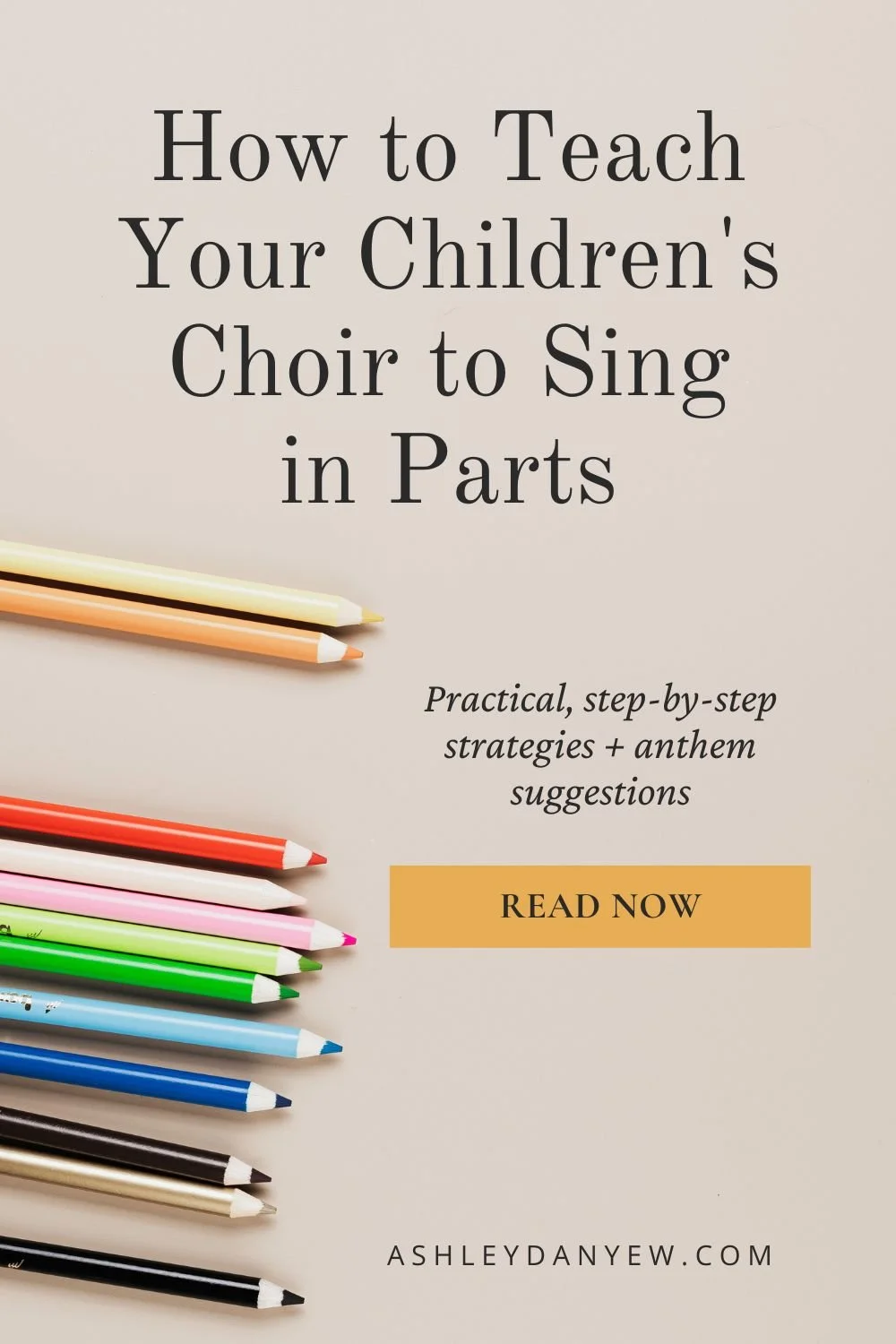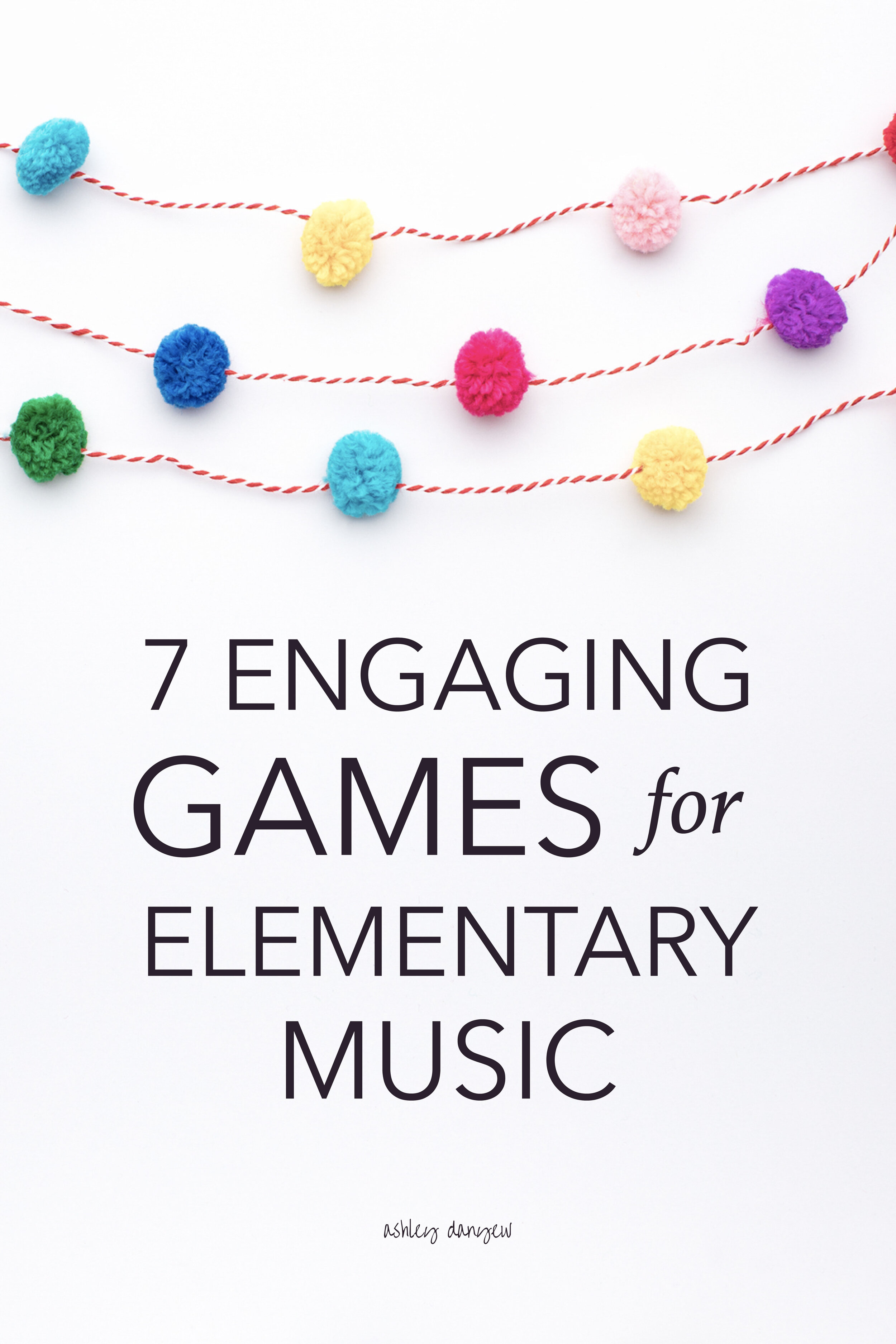Have you ever wondered what’s developmentally appropriate for children in 1st grade versus 2nd grade, or what order you should teach things in? How soon should you start talking about things like steady beat or vowels or breath? When are children ready to sing in parts?
There aren’t hard-and-fast rules about this sort of thing in church choir settings, but I’ve put together a general list of musical skills and concepts for children in Kindergarten, 1st Grade, and 2nd Grade, a group often referred to as Younger Elementary.
Use this chart as a point of reference in your teaching, an outline of what to teach when, and a guide to what children at different ages may be capable of, developmentally and musically.
A note for those of you with a combined choir:
I know it can be a challenge sometimes to know what to teach when. How do you challenge your older children while not planning activities that are over the younger ones’ heads and keep everyone engaged and participating the whole time? Do you aim for the median grade level?
Oftentimes, yes. But that doesn’t mean that you can’t go beyond that and introduce more advanced concepts from time to time.
Notice how much overlap there is between these three grade levels. Children are often capable of higher levels of learning and musicianship when surrounded by children who are a little bit older and more experienced, so this may allow you to introduce things that are a level or two above your youngest age group.
Also, anytime you create opportunities for children to express their own creativity, musical or otherwise, you give them a chance to demonstrate their level of understanding and challenge themselves in new and different ways.
For instance, if you ask children to create their own rhythm pattern (4 beats long) to play on their musical instrument, the younger children might create patterns using quarter notes and eighth notes, while the older children incorporate quarter rests and half notes. This is a great way to differentiate your instruction and create space for multiple levels of learning to happen at the same time.
What Musical Skills to Teach in Younger Elementary
Kindergarten
Children at this age are fun, creative, and full of energy. Keep your rehearsals moving, with lots of songs (with hand motions), vocal exploration, and movement activities.
Rhythm
echo-chant steady beat
step to steady beat or use body percussion
play a steady beat with rhythm instruments (unpitched)
echo-play rhythm patterns with rhythm instruments (unpitched)
echo-chant rhythm patterns using quarter notes, quarter rests, and eighth notes (by ear)
recognize same vs. different in rhythmic duration (short/long)
recognize same vs. different in sound/silence
Melody
echo-sing tonal patterns using quarter notes, quarter rests, and eighth notes (by ear)
recognize same vs. different in high/low
recognize same vs. different in melodic direction (up/down)
create songs in a limited range
create new and different forms of notation (not standard musical notation)
sing a variety of folk and traditional songs
echo-sing sol-mi patterns
recognize same vs. different in major/minor
Harmony
sing songs with a director-accompanied ostinato pattern
Form
recognize musical phrasing
recognize same vs. different in form (A section vs. B section)
Expression
recognize same vs. different in tempo (fast/slow)
create sound effects to accompany stories
recognize same vs. different in dynamics (loud/soft)
explore different voices: singing, speaking, shouting, whispering
recognize same vs. different in timbre (vocal/instrumental)
play a variety of unpitched percussion instruments
First Grade
By 1st grade, children are capable of chanting, playing, and singing a variety of rhythmic and melodic patterns. Help them build their musical vocabulary by working these into your warm-ups and rote teaching and turning them into fun games.
Rhythm
step to steady beat or use body percussion
play a steady beat with rhythm instruments (unpitched)
echo-play and echo-chant rhythm patterns using quarter notes, quarter rests, eighth notes, and half notes
read, and write rhythm patterns using quarter notes, quarter rests, eighth notes, and half notes
recognize beat vs. rhythm
recognize strong vs. weak beats
read steady beat with body percussion or unpitched percussion instruments
create 2- or 4-beat rhythm patterns to accompany songs
recognize long/short sounds of word syllables in song lyrics
use bar lines to group beats
Melody
develop ability to match pitch and sing in tune
recognize melodic contour and direction (up/down)
read and write melodic patterns on staff (2-3 lines)
read sol-mi-la patterns on staff (2-3 lines)
echo-sing sol-mi, sol-mi-la, sol-la-sol-mi melodic patterns
create sol-mi and sol-mi-la melodic patterns
play sol-mi intervals on pitched rhythmic instruments
sing a variety of folk and traditional songs
sing a variety of songs in major and minor
Harmony
sing songs with ostinato patterns
echo-play rhythmic ostinato patterns
echo-sing melodic ostinato patterns
create rhythmic and/or melodic ostinato patterns
read and write rhythmic ostinato patterns
Form
recognize same vs. different in tempo (fast/slow/walking)
recognize musical phrasing
recognize musical form (AB, ABA)
Expression
recognize tempo
recognize dynamics
sing a variety of music from different cultures
explore different voices: singing, speaking, shouting, whispering
recognize double bar line and repeat sign
Help your younger elementary children learn the language of music.
A digital 152-card set, featuring:
two sets of printable tonal pattern cards (major and minor)
two sets of printable rhythm pattern cards (duple and triple)
Second Grade
At this age, children are developing independent thinking and musicianship skills. They are capable of singing, chanting, playing, reading, and writing a variety of rhythmic and melodic patterns and singing with expression. Make sure to provide them with opportunities to exercise their creativity and sing, chant, and play their own rhythmic and melodic patterns.
Rhythm
step to steady beat or use body percussion
play a steady beat with rhythm instruments (unpitched)
echo-play and echo-chant rhythm patterns using quarter notes, quarter rests, eighth notes, half notes, and whole notes
read, and write rhythm patterns using quarter notes, quarter rests, eighth notes, and half notes
recognize strong vs. weak beats
sing music in a variety of meters: 2/4, 3/4, 4/4, and 6/8
play, read, and write 2-part rhythms
Melody
develop ability to match pitch and sing in tune
recognize melodic contour and direction (up/down)
echo-sing, echo-play, create, read, and write tonal patterns using do, re, mi, sol, and la
sing call and response songs
recognize do as ending pitch (in major keys)
read and write melodic steps, skips, and repeated notes
read and follow along with a melody line in a unison song or anthem
write melodic patterns using steps, skips, and repeated notes on staff (5 lines, no clef)
sing a variety of folk and traditional songs
sing songs in major and minor
Harmony
sing melodic ostinato patterns
play 2-measure instrumental ostinato patterns
create rhythmic ostinato patterns
read and write rhythmic or melodic ostinato patterns
sing in 2-part rounds
Form
recognize same vs. different in phrases
singing and responding to call and response
recognize musical form (AB, ABA, rondo ABACABA)
recognize introduction, coda
Expression
recognize tempo
sing and play with dynamic expression (f, p)
read and write dynamics (f, p)
read and write bar lines, double bar lines, and repeat signs
sing a variety of music from different cultures
Looking for more?
Download the free 19-page eBook with what-to-teach-when checklists for
preschool, younger elementary, and older elementary children's choir.
I’d love to hear from you:
What musical skills do you hope to develop in your young singers this year?
More in this series:
What to Teach When in Children's Choir: Older Elementary
What to Teach When in Children's Choir: Preschool
Sources:
Davis Elementary Music Curriculum
Growing in Grace: Scope and Sequence Chart
Sample Music Curriculum for Virginia Public Schools








































